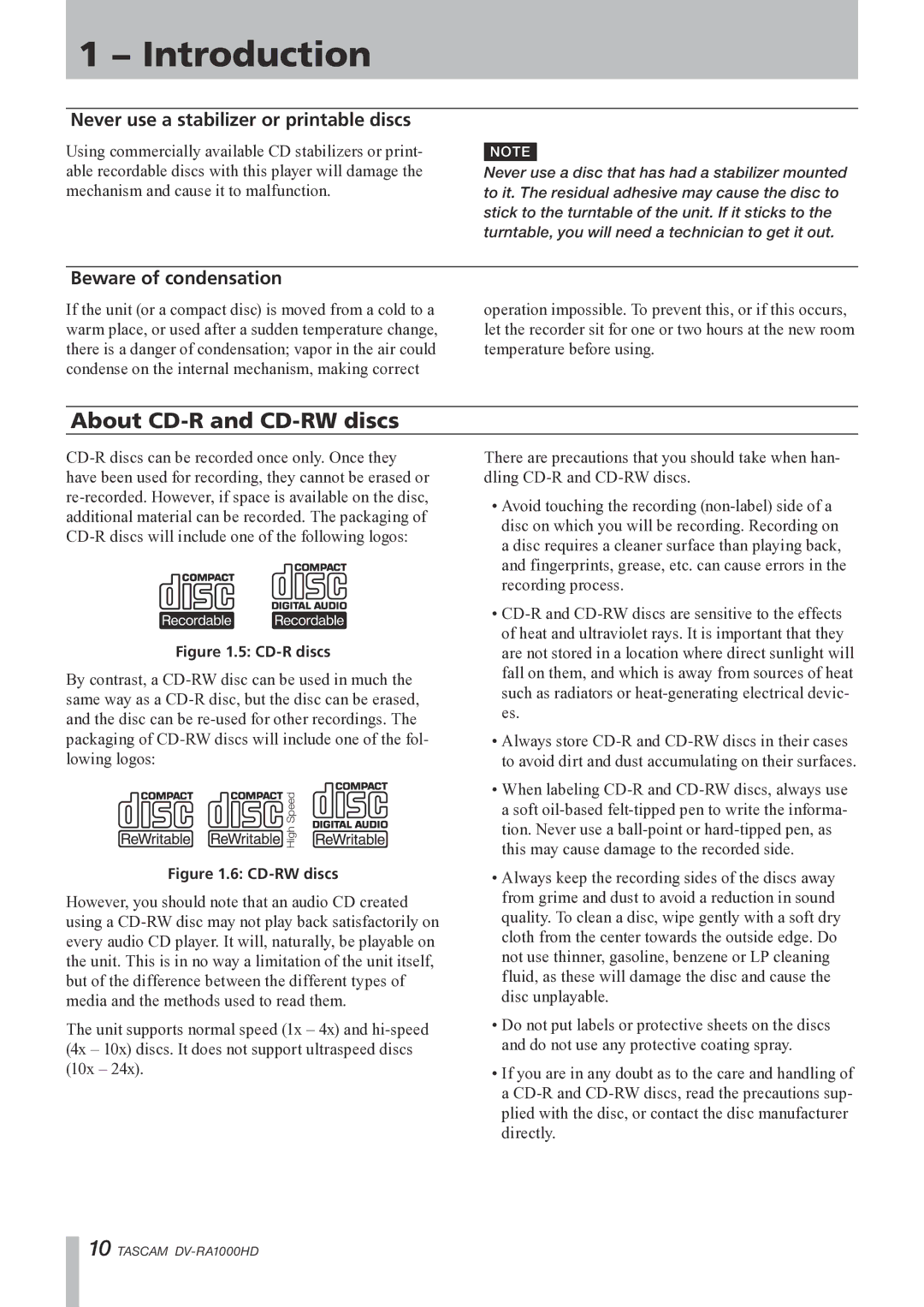
1 − Introduction
Never use a stabilizer or printable discs
Using commercially available CD stabilizers or print- able recordable discs with this player will damage the mechanism and cause it to malfunction.
NOTE
Never use a disc that has had a stabilizer mounted to it. The residual adhesive may cause the disc to stick to the turntable of the unit. If it sticks to the turntable, you will need a technician to get it out.
Beware of condensation
If the unit (or a compact disc) is moved from a cold to a warm place, or used after a sudden temperature change, there is a danger of condensation; vapor in the air could condense on the internal mechanism, making correct
operation impossible. To prevent this, or if this occurs, let the recorder sit for one or two hours at the new room temperature before using.
About CD-R and CD-RW discs
Figure 1.5: CD-R discs
By contrast, a
![]() High Speed
High Speed
Figure 1.6: CD-RW discs
However, you should note that an audio CD created using a
The unit supports normal speed (1x – 4x) and
There are precautions that you should take when han- dling
•Avoid touching the recording
•
•Always store
•When labeling
•Always keep the recording sides of the discs away from grime and dust to avoid a reduction in sound quality. To clean a disc, wipe gently with a soft dry cloth from the center towards the outside edge. Do not use thinner, gasoline, benzene or LP cleaning fluid, as these will damage the disc and cause the disc unplayable.
•Do not put labels or protective sheets on the discs and do not use any protective coating spray.
•If you are in any doubt as to the care and handling of a
10 TASCAM
